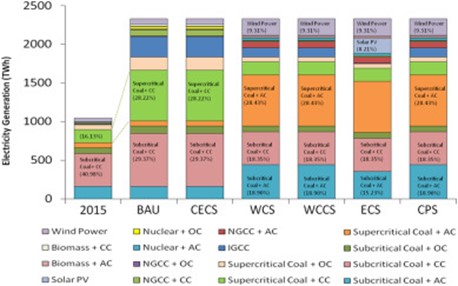ABSTRACT
The North China Grid has the highest proportion of fossil fuel-based electricity generation in China and also suffers from severe water scarcity issues. This study uses a multi-objective optimization model to explore future configurations of generating and cooling technologies of the electric power sector in the North China Grid subject to constraints imposed by existing policies on water conservation and carbon reduction in 2030. Our findings highlight that the current carbon reduction commitments of China do not have significant impacts on the North China Grid's electric power sector development while policies in the water sector generate much larger impacts. Imposing water constraint according to the ‘Three Red Line’ Policy requires increasing utilization of wind power and air cooling systems, which simultaneously increases economic cost and carbon emissions compared to the business as usual scenario. Imposing enhanced carbon emission and water consumption constraints reap the co-benefits of carbon reduction and water conservation by increasing the proportion of solar PV generation to 8.21%, which increases the unit electricity cost from RMB 0.82 per kWh to RMB 1.37 per kWh. In 2030, electricity generation in the North China Grid generates 1599.88 to 1690.89 million tons (Mt) of carbon emissions under different scenarios whereas imposing water constraint reduces water consumption from 3.34 billion m3 to 1.94 billion m3.
KEYWORDS
Water consumption; Carbon emission; Electric power sector; Optimization
JCR CLASSIFICATION
Q1
Science of the Total Environment
https://doi.org/10.1016/j.scitotenv.2020.144865

